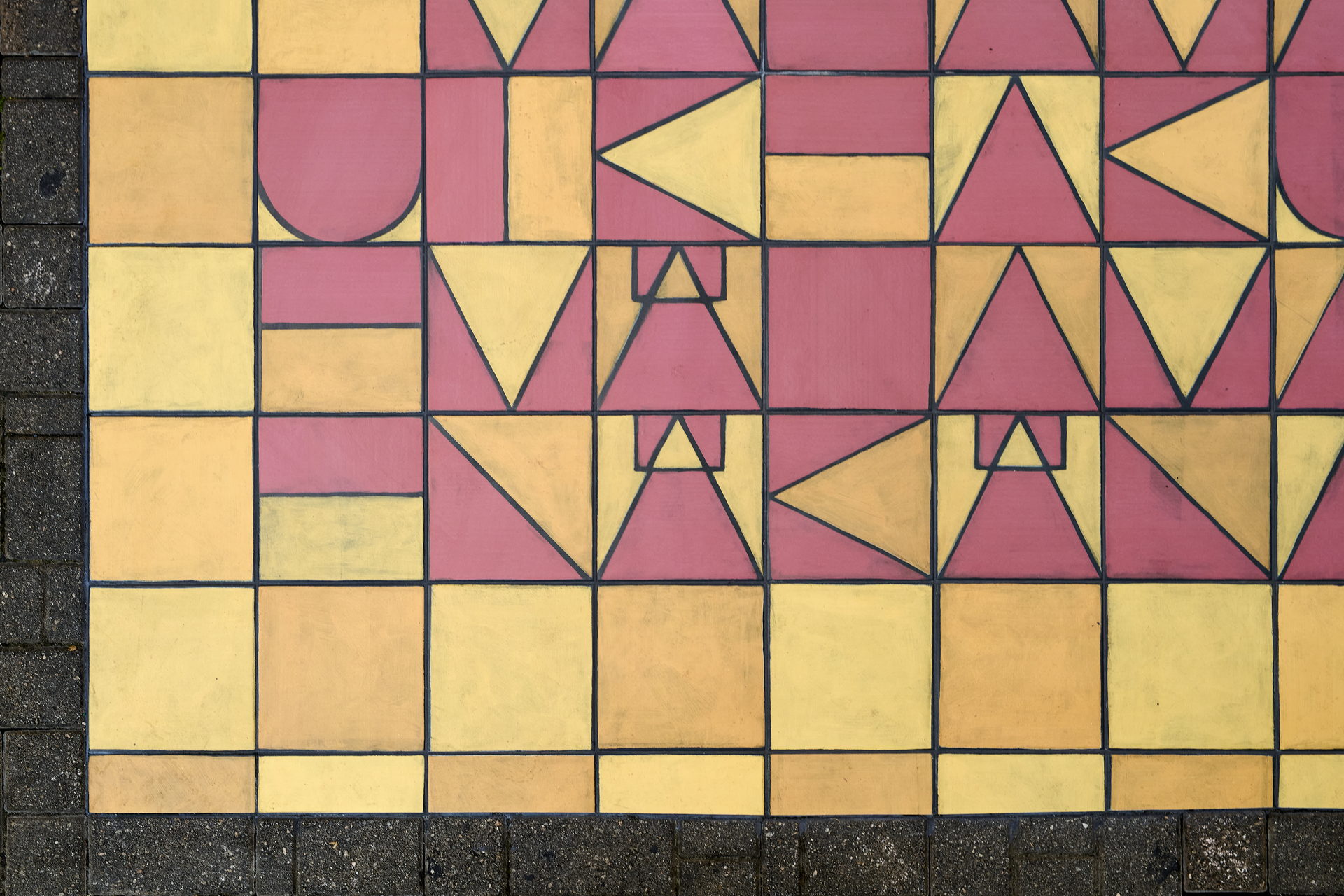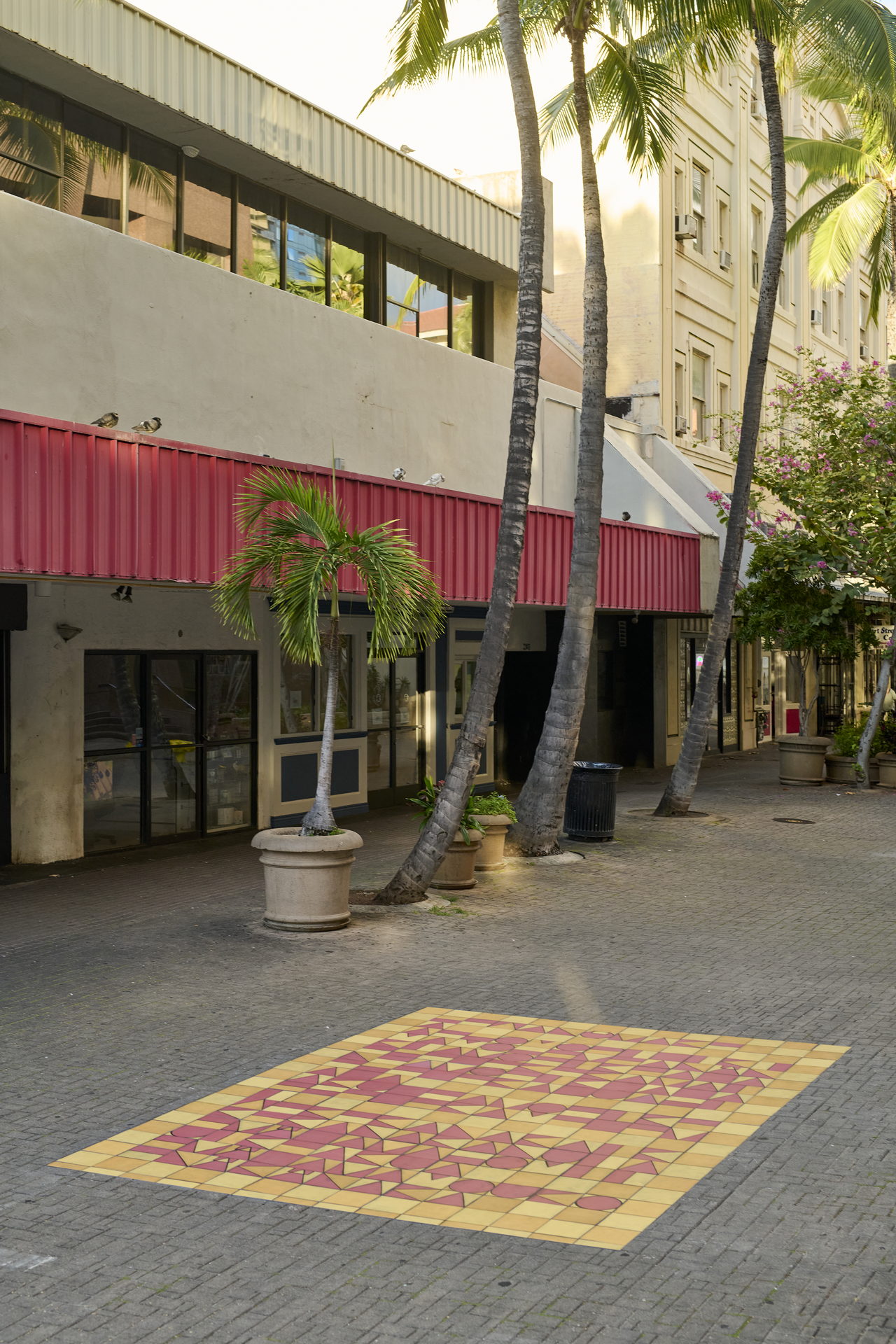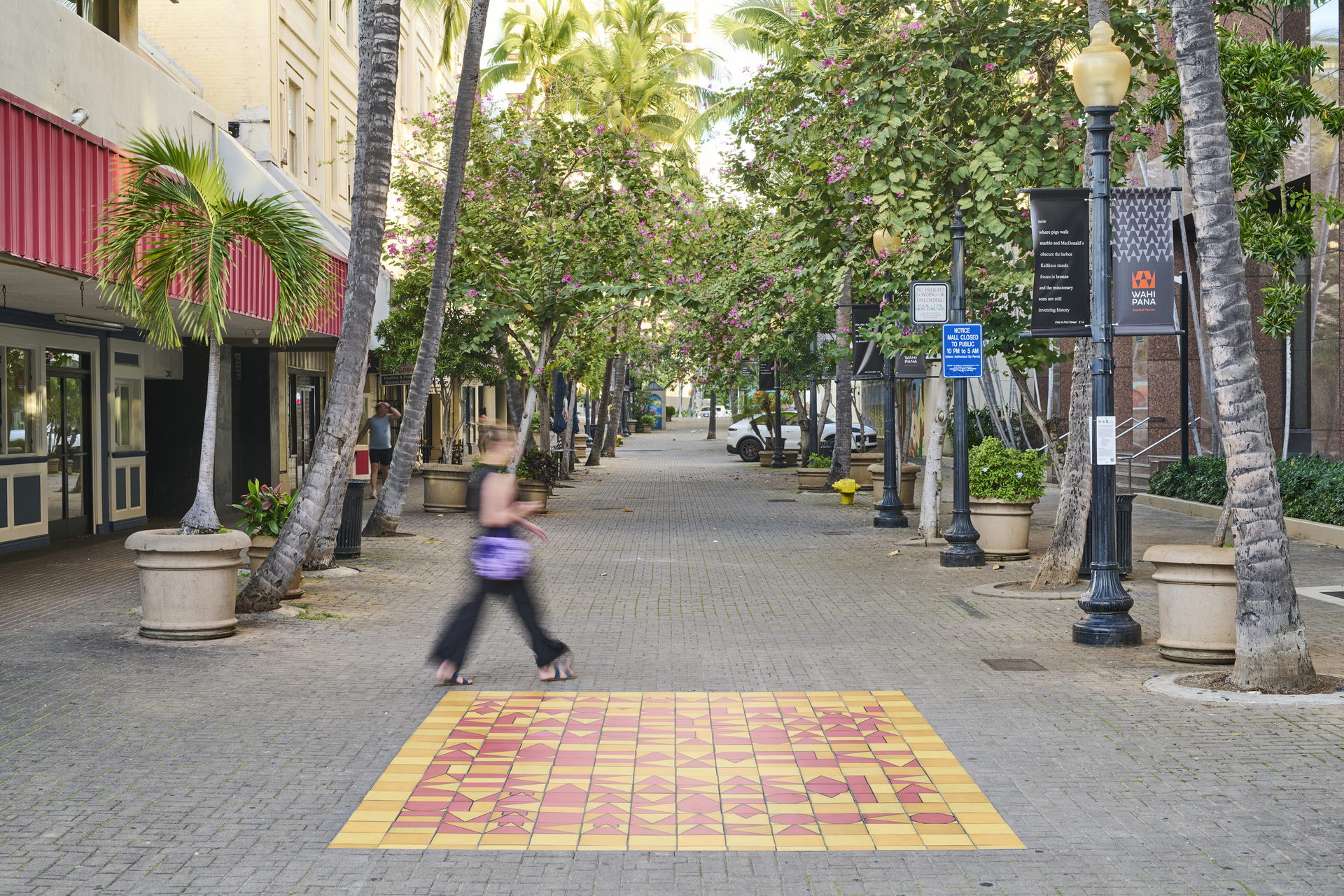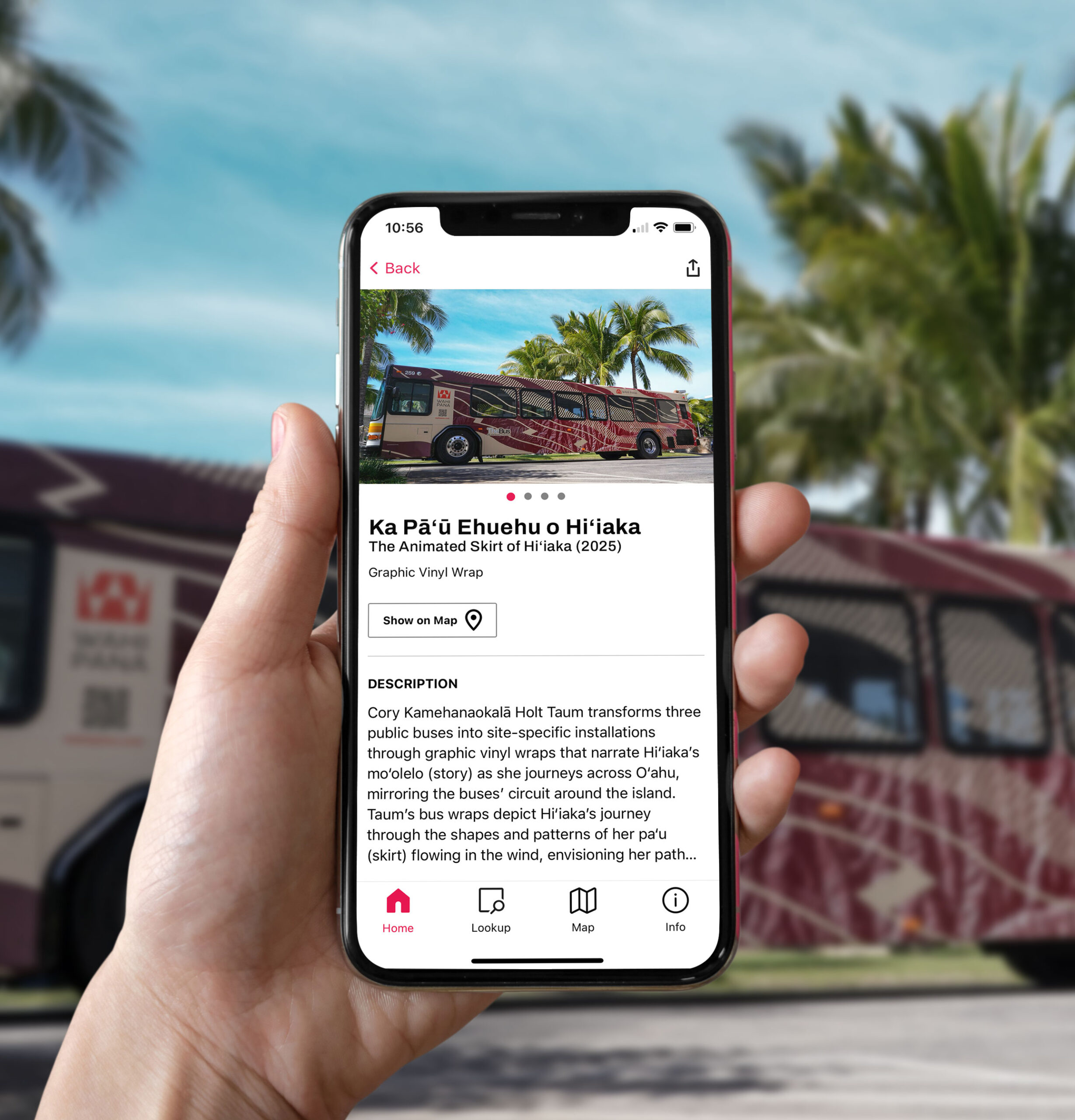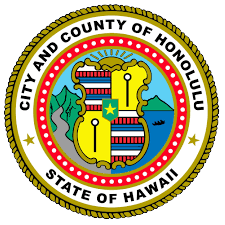ON THIS PAGE
Title
Ke Kānāwai Māmalahoe
Law of the Splintered Paddle (2025)
Artist(s)
Carl F.K. Pao
Collaborators
Ka‘imina‘auao Kahikina
Daniel Kauwila Mahi
Site: 2
Fort Street x Pauahi
Title
Ke Kānāwai Māmalahoe
Law of the Splintered Paddle (2025)
Artist(s)
Carl F.K. Pao
Collaborators
Ka‘imina‘auao Kahikina
Daniel Kauwila Mahi
Ke Kānāwai Māmalahoe
Law of the Splintered Paddle (2025)
Carl F.K. Pao’s tile mural transforms ‘Ōlelo Hawai‘i into a visual language using a coded alphabet, sharing mo‘olelo that inspires viewers to pause, reflect, and connect with their kuleana (responsibility) to land and community. The mural draws from Ke Kānāwai Māmalahoe (The Law of the Splintered Paddle), established by King Kamehameha I in 1797. Rooted in a story of protection and compassion, this law calls for safety and respect for all, symbolizing aloha (compassion) and justice.
| E nā kānaka, E mālama ‘oukou i ke akua A e mālama ho‘i ke kanaka nui a me kanaka iki; E hele ka ‘elemakule, ka luahine, a me ke kama A moe i ke ala ‘A‘ohe mea nāna e ho‘opilikia. Hewa nō, make. |
Oh people, Honor thy god; respect alike [the rights of] people both great and humble; May everyone, from the old men and women to the children Be free to go forth and lie in the road Without fear of harm. Break this law, and die./td> |
Fort Street
Ka‘imina‘auao Kahikina, Daniel Kauwila Mahi
The original name of the Fort Street area was Kou. The intersection of Alakea and Merchant Streets is called Kauanonoula, named after the famous chief Kauanonoula. She enjoyed playing kōnane at Kou, which is where Fort Street is located today. Her kōnane board was crafted from kou wood gathered near Kapiʻolani Park, featuring small squares marked with dog teeth inlays at the corners. This story provides insight into the area’s naming, reflecting the hana leʻaleʻa (pleasurable happenings) of chiefs like Kauanonoula and her male companion, Honokaupu, playing kōnane. The romantic phrase, “Huhuhui aku nā maka i kou,” which means “We will see each other’s faces at Kou,” originates from this context, symbolizing the twisting and torment of love, similar to the Kou tree.
During the time of Kamehameha Paiʻea, Kou referred to all of Honolulu, and the area known today as Fort Street was renamed Kekuanohu, meaning “scorpionfish back.” This name likely arose due to the fort’s appearance, as it was lined with artillery. In 1815, Kamehameha learned of a potential occupation of Kou by a Russian warship, prompting him to send his warriors to confront them. When Kamehameha’s warriors and chiefs arrived, the Russian warship fled to Kaua’i, where they constructed a fort named Hipo at Hanalei and Waimea. Kamehameha’s war general, Kalanimoku, recognized Honolulu’s vulnerability and ordered the construction of Kekuanohu to protect Kou from invasion. It is said that both women and men throughout Oʻahu participated in its construction, with the exception of those from Waimea, who were responsible for delivering timber.
Kekuanohu also served as the residence of the royal governors of the Kingdom for many years. Chief Kekūanāoʻa was the last governor of Oʻahu to live in the fort. In 1857, Kekuanohu was dismantled to extend the street and harbor. Throughout the late 19th and early 20th centuries, Fort Street became a bustling commercial area, home to tailors, photographers, and small businesses. By 1968, Fort Street eventually transformed into a pedestrian mall.
Today, Kou is known as a center of commerce and industry, yet its rich history often goes unrecognized. The Wahi Pana project invites a deeper connection to this storied place, uncovering its many layers of significance—as a site of romance, protection, and trade—restoring its place in the collective memory of Oʻahu.

Carl F.K. Pao
Carl F.K. Pao is a Native Hawaiian painter who initiated an ongoing series of exhibits based on the Hawaiian concept of Maka, the most recent of which is Makahā (2016), which showed at The ARTS at Mark’s Garage. Pao was the inaugural artist-in-residence at the Australian National University (ANU) College of Asia and the Pacific in July 2012; concluded a successful group exhibition at the Smithsonian’s National Museum of the American Indian in July 2011; was co-owner/operator of the Lodestar Collective gallery in Kailua; the volunteer Arts Editor for The Contemporary Pacific journal (TCP) from 2008–2011; host and co-producer of the educational art series Art Hunter; and is currently exhibiting in shows both locally and abroad. Pao also works on various commercial and private art commissions.
Born and raised on the island of O‘ahu, Pao graduated from Kamehameha Schools in 1989. He earned a BFA at the University of Hawai‘i at Mānoa in 1994, with an emphasis in ceramics. Carl received his MFA with first-class honors in 1999 from Elam School of Fine Arts at the University of Auckland, Aotearoa. He returned to Hawai‘i in 2000 to take a full-time teaching position at the Kamehameha Schools High School in the visual arts.
Photos:
